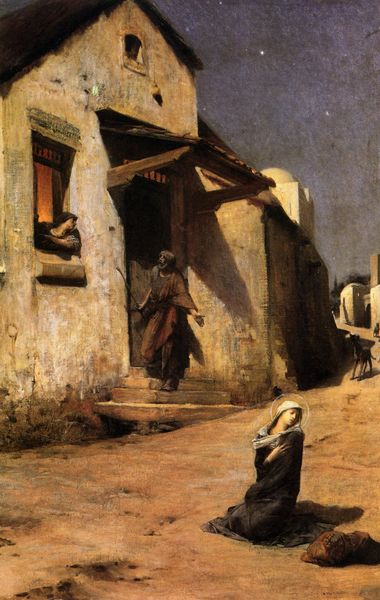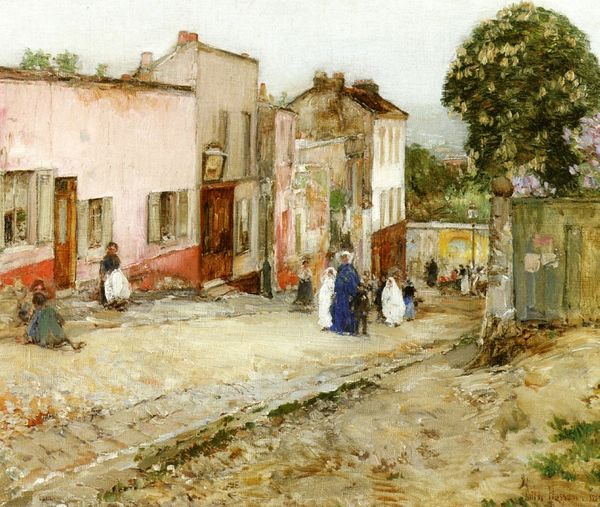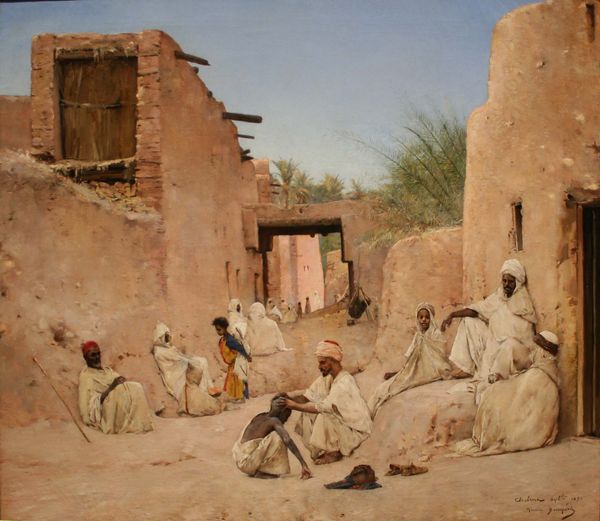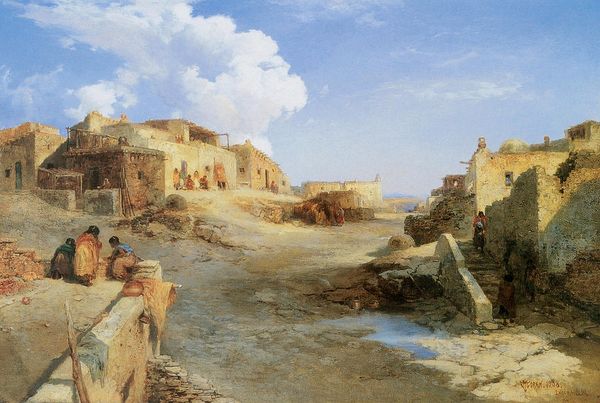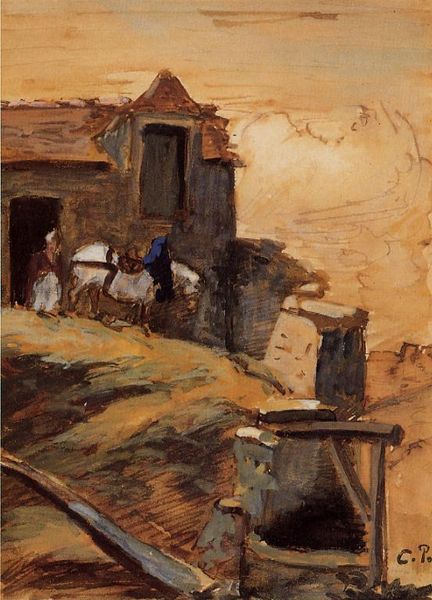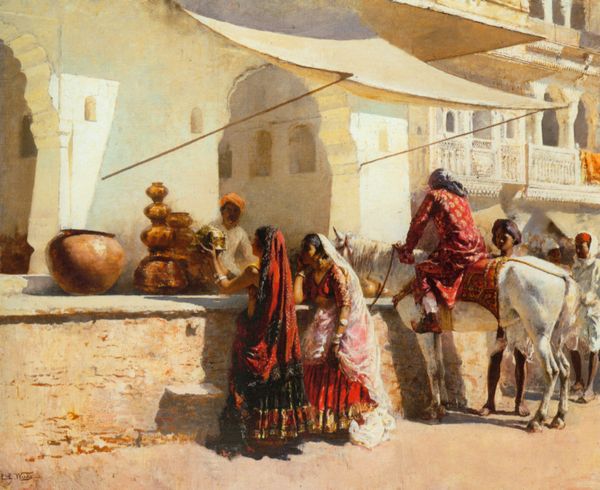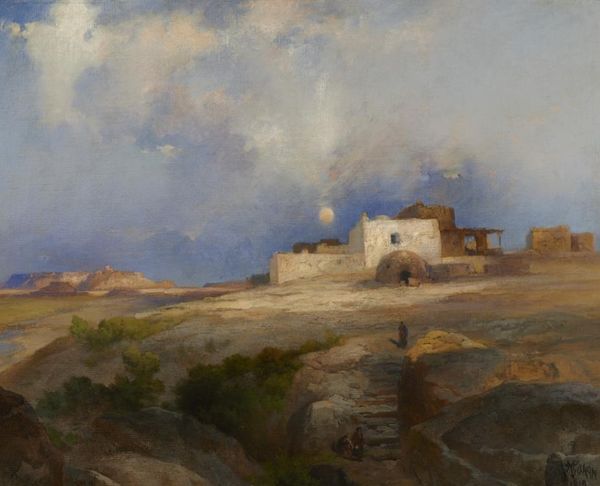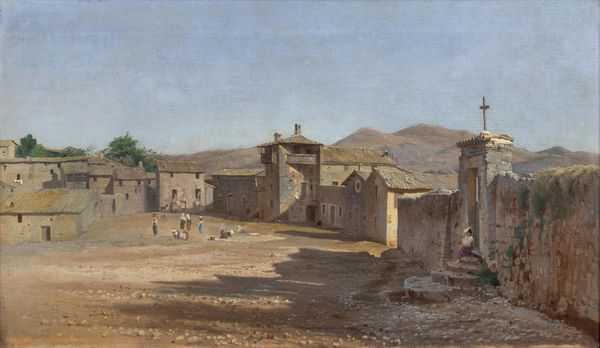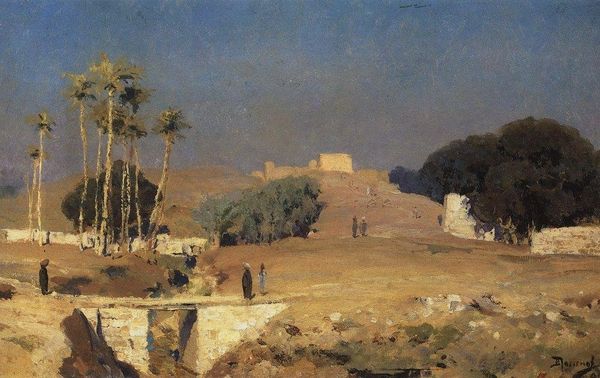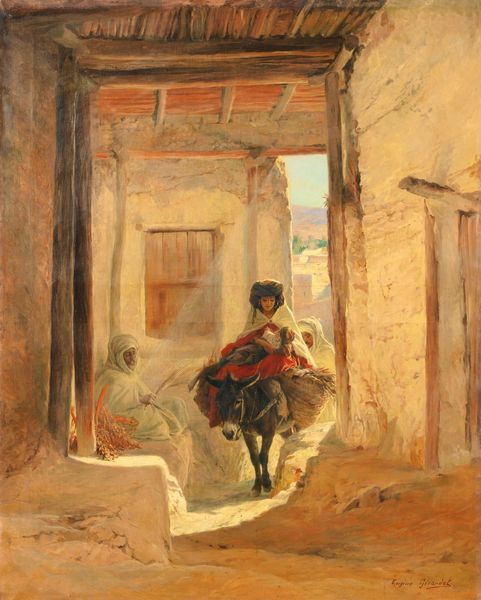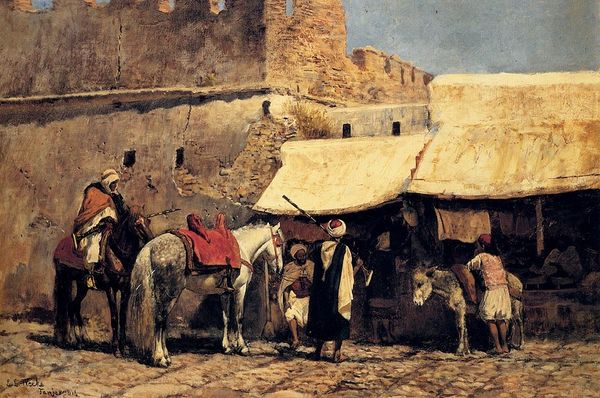
painting, plein-air, oil-paint
#
urban landscape
#
painting
#
impressionism
#
plein-air
#
oil-paint
#
landscape
#
oil painting
#
orientalism
#
cityscape
#
genre-painting
#
watercolor
#
realism
Copyright: Public domain
Editor: Here we have William Merritt Chase’s "Spanish Village," painted in 1882. It's an oil painting, and the tones create this really warm, almost dusty feeling. What do you see when you look at this work? Curator: Well, I immediately think about the materiality of daily life depicted here. The textured walls, the dirt road – these aren't romantic visions; they’re made of specific materials shaped by labor. Editor: That's interesting. It's a fairly standard Impressionist landscape, though. Curator: Is it? Consider the artist’s labor. The Impressionists often depicted leisure, but here, the focus shifts to a working village. Chase is less concerned with capturing a fleeting moment of light and more with conveying the tangible reality of this place. Editor: How so? Curator: Look at the buildings. The rough rendering isn’t just about capturing light; it’s about suggesting the material construction and likely daily usage of these structures. Think about the labor involved in extracting and preparing the pigments Chase himself used. Are the shadows naturally produced by daylight, or do they suggest long hours toiling away? The inclusion of the donkey makes me wonder how animals factor into the villagers' labor force. Editor: I hadn’t considered that. It almost feels like a conscious choice to show the working-class aspect of the village, which sets it apart from other landscapes. Curator: Precisely. It makes you think about the hands that built these structures, the people who walked these streets, and the material conditions of their lives. How might our perception change if we considered Chase’s relationship to them? Was he an empathetic outsider? A distant observer? Editor: That's given me a completely new way to appreciate not just this painting, but art in general. It encourages me to ask who made this, how they made it, and for whom. Curator: Indeed. Recognizing the material processes inherent to a work and considering its social dimensions can enrich the experience and deepen your perspective.
Comments
No comments
Be the first to comment and join the conversation on the ultimate creative platform.
